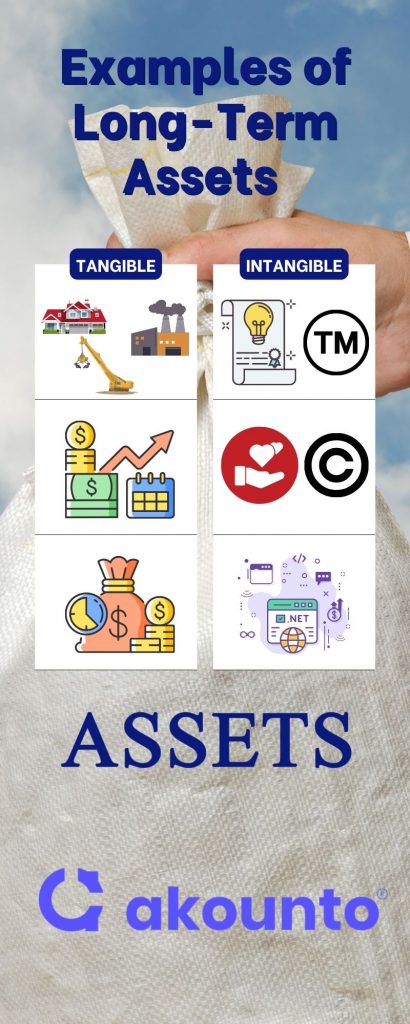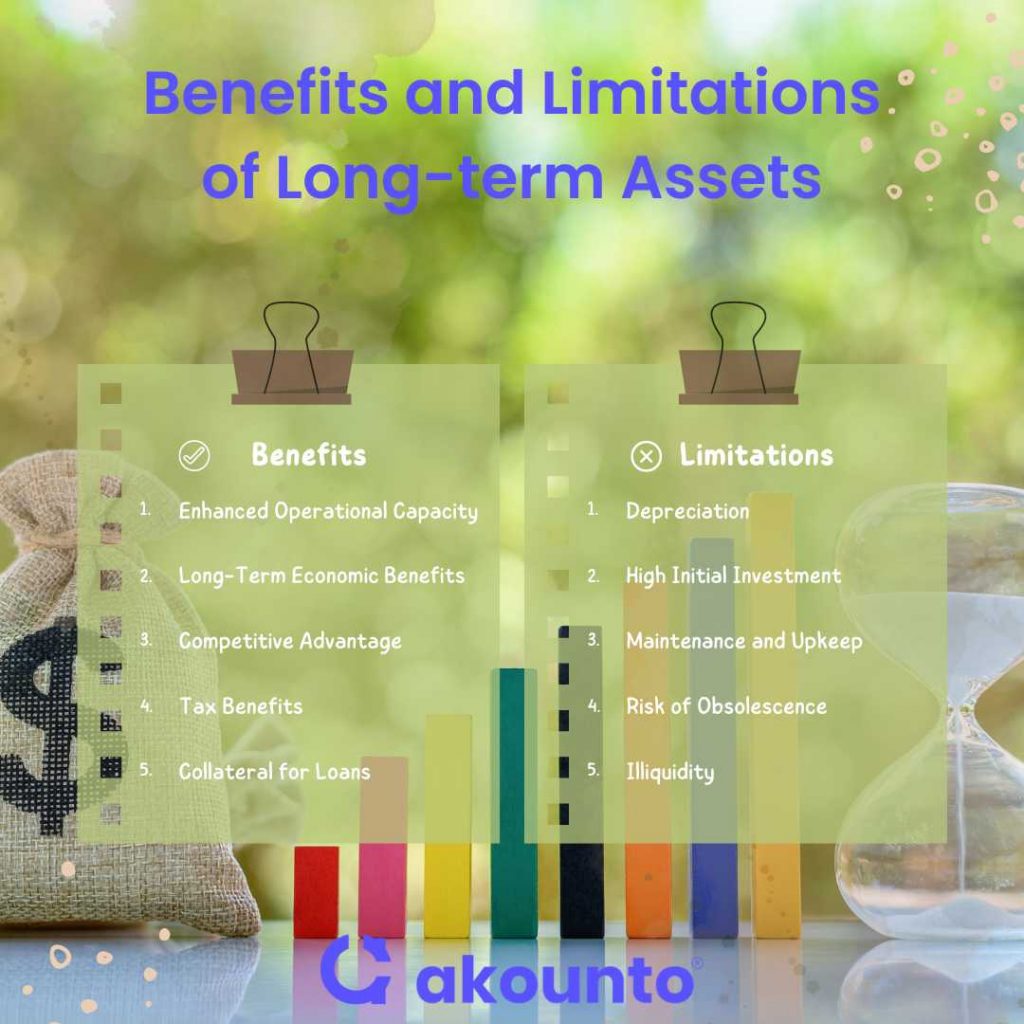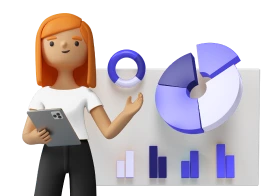What Are Long-Term Assets?
Long-term assets (fixed or capital assets) are assets the company owns and uses for a period extending beyond one year.
Long-term assets are essential to a company’s daily operations and long-term growth. Long-term assets comprise tangible assets such as property, plant, and equipment (PPE) and intangible assets like patents and trademarks.
Tangible assets have physical substance. These include property, plant, and equipment (PPE) that the company uses in its daily operations and the manufacturing process. Because of their physical nature, these assets aren’t easily liquidated.
Intangible assets, although lacking physical form, can provide substantial long-term financial benefits to a company. These include patents, trademarks, copyrights, and domain names. Despite being intangible, these assets can significantly contribute to a company’s competitive advantage and overall brand reputation.
The company’s long-term assets are reported on the balance sheet and represent a significant portion of the total assets. Proper management of long-term assets is crucial to ensure a company’s successful operation and financial health.
Examples

Tangible Assets:
- Property, Plant, and Equipment (PPE): This includes land, buildings, machinery, vehicles, and other physical resources a company uses for its business operations.
- Long-term Investments: Financial securities, like bonds or stocks of other companies, that a company plans to hold for more than one year also fall into this category.
- Other Long-Term Assets: These may include security deposits or long-term prepaid expenses.
Intangible Assets:
- Patents: If a company develops a new product or process, it can patent it, providing the company exclusive rights to use and sell the invention.
- Trademarks: Words, phrases, or symbols that distinguish a company’s products from competitors fall into this category.
- Goodwill: arises when one company acquires another at a buying price higher than its fair value.
- Copyrights: These protect original works, such as books, music, and software.
- Domain Names: The digital address of a company’s website is a crucial intangible asset in today’s digital age.
Cost of a Long-Term Asset
The cost of a long-term asset isn’t confined to its purchase price but extends to all costs incurred to make the asset usable. Here are the main components:
- Initial Purchase Price: is the primary cost the company pays to acquire the asset.
- Installation and Setup Costs: Expenses to make the asset operational, including assembly, testing, or any necessary modifications, are added to the initial cost.
- Legal and Administrative Costs: Expenses tied with the asset’s purchase, like contract negotiation or procurement formalities, are included.
- Transportation and Handling Costs: Charges incurred to bring the asset to its operational location also contribute to the total cost.
- Improvements and Upgrades: If upgrades enhance the asset’s functionality or prolong its useful life, their cost is included too.
After summing these costs, any discounts or rebates received at the time of the asset purchase are deducted, leading to the final cost of the long-term asset.
Numeric Example
Let’s assume a company purchases a machine for $10,000. They also pay $500 for transportation, $200 for installation, and $300 for legal fees. After setting up, they pay an additional $1,000 for an upgrade to extend the machine’s lifespan.
The total cost of the machine is calculated as follows:
Purchase Price: $10,000 Transportation Costs: $500 Installation Costs: $200 Legal Fees: $300 Upgrades: $1,000 Total Cost: $12,000
The $12,000 is the total cost of this long-term asset, representing its initial book value on the company’s balance sheet.
Long Term Assets Depreciation
Depreciation expense is spread over the asset’s useful life, which is the estimated productive period for the company. Different methods can be used to calculate depreciation, such as the straight-line method, declining balance method, or units of production method.
Accumulated depreciation, which represents the total depreciation of an asset since its acquisition, is subtracted from the asset’s cost to determine its book value on the company’s balance sheet.
Long-Term Assets Disposal
The disposal of long-term assets involves removing the asset’s carrying value (the cost of the asset less accumulated depreciation) from the company’s balance sheet. If the asset is sold, any difference between the carrying value and the sale price is the gain or loss in the company’s income statement.
Benefits and Limitations
Benefits
- Enhanced Operational Capacity: Long-term assets like machinery and equipment can increase a company’s production capacity, allowing it to generate goods or services more efficiently.
- Long-Term Economic Benefits: Long-term assets provide income over extended periods, contributing to consistent revenue streams.
- Competitive Advantage: Certain intangible assets, like patents or proprietary technology, can offer a competitive edge.
- Tax Benefits: Depreciation on long-term assets can be deducted from taxable income, reducing the company’s tax liability.
- Collateral for Loans: Tangible long-term assets, such as property or equipment, can be used as collateral for business loans.

Limitations
- Depreciation:В Over time, long-term assets lose value through depreciation, impacting a company’s financial health if not properly managed.
- High Initial Investment:В Acquiring long-term assets often requires high upfront costs.
- Maintenance and Upkeep:В Long-term assets may need repair or maintenance, leading to additional expenses.
- Risk of Obsolescence:В Rapid technological changes could make some long-term assets obsolete before they are fully depreciated.
- Illiquidity:В Unlike current assets, long-term assets can’t be quickly converted into cash, posing a liquidity challenge.
Current vs. Long-Term Assets
| Parameter | Current Assets | Long-Term Assets |
| Definition | Current assets are those assets that are expected to be converted into cash within one financial year. They are used for short-term financial operations. | Long-term assets, also known as fixed or capital assets, are expected to provide value for more than one financial year. They are used in the core business operations. |
| Liquidity | Current assets have high liquidity. | Long-term assets have low liquidity. |
| UsageThese assets are used for day-to-day operations and are important for maintaining the working capital cycle. | These assets are used for long-term strategic plans, operations, and income generation. | |
| Risk | The risk involved is relatively low since these assets are continuously used and converted into cash. | The risk involved is higher due to factors like obsolescence, depreciation, and maintenance costs. |
| Financial Statements | Current assets appear first in the balance sheet’s asset section. | Long-term assets appear after current assets in the balance sheet. |
| Example | Cash, accounts receivable, inventory, prepaid expenses are examples of current assets. | Land, building, equipment, patents, goodwill, and long-term investments are examples of long-term assets. |
Conclusion
Long-term assets are pivotal in bolstering a company’s operations and growth prospects. These fixed assets require strategic management to ensure the firm’s financial health against potential challenges of depreciation and obsolescence for the business to reap economic benefits and enjoy competitive advantages. So, making informed decisions to optimize their usage and reflect accurate value on the balance sheet is imperative.
To get a complete view of accounting, bookkeeping, and more, visit the Akounto Blog section today!




